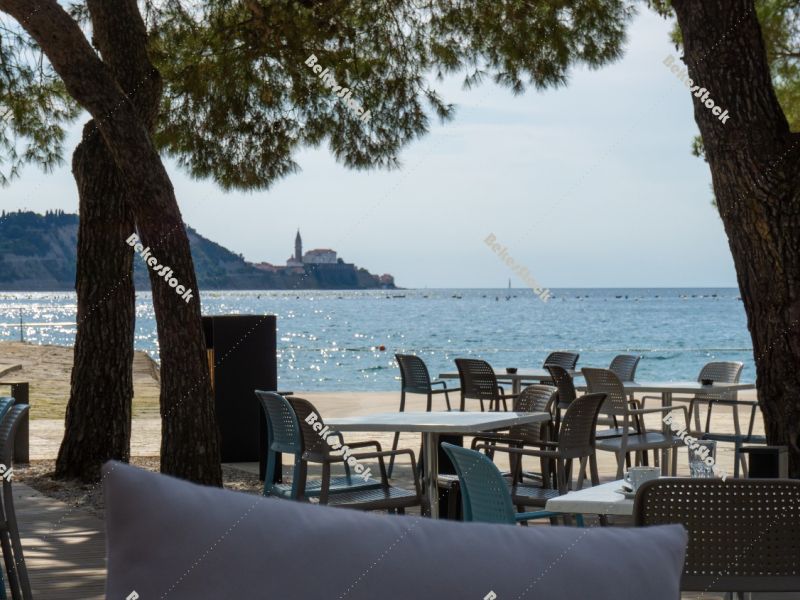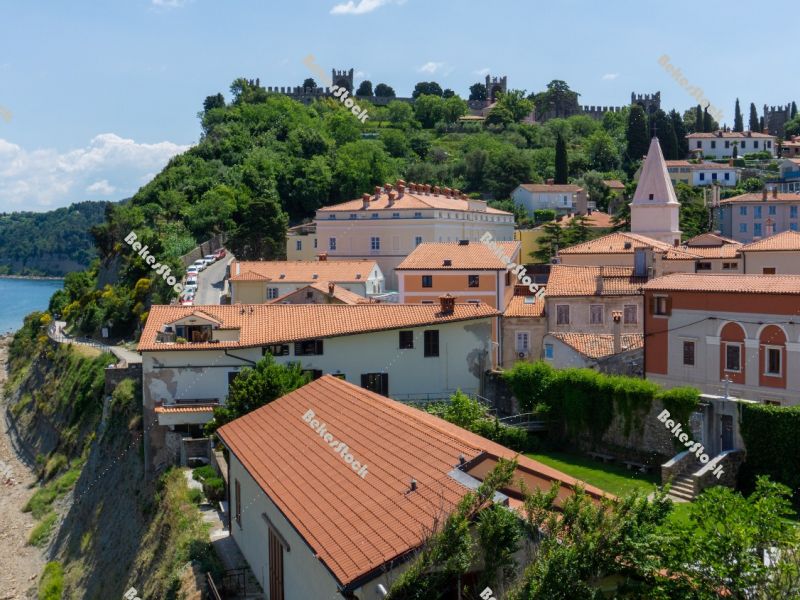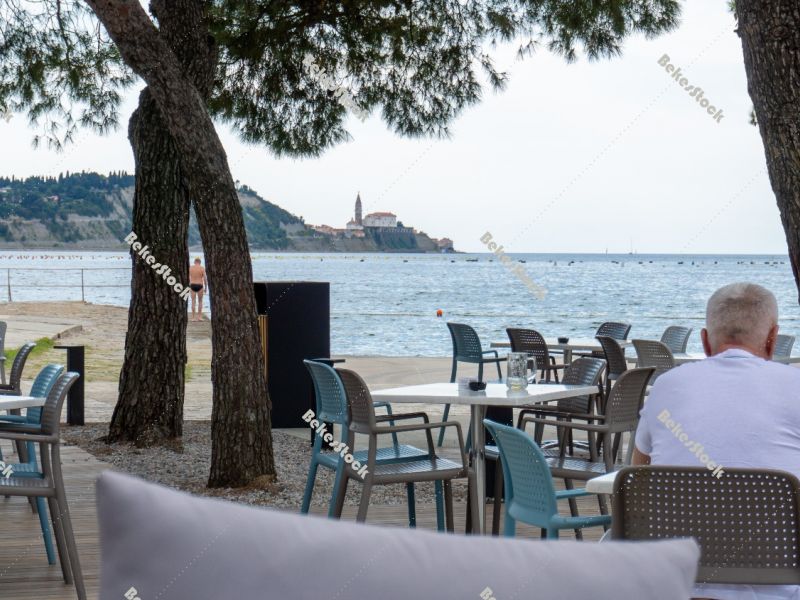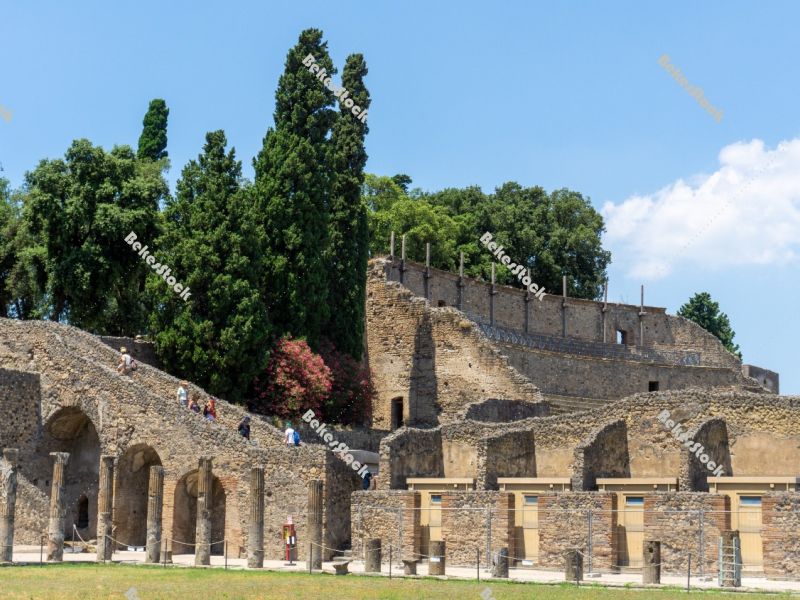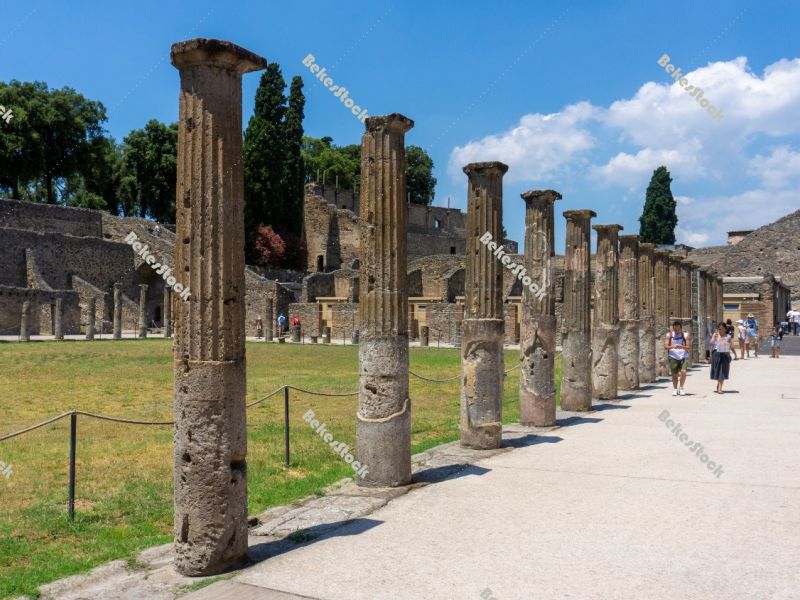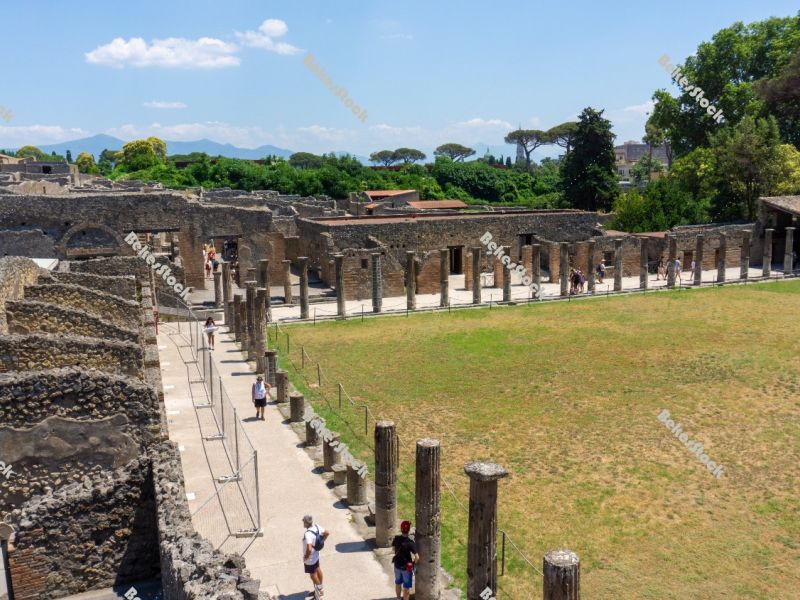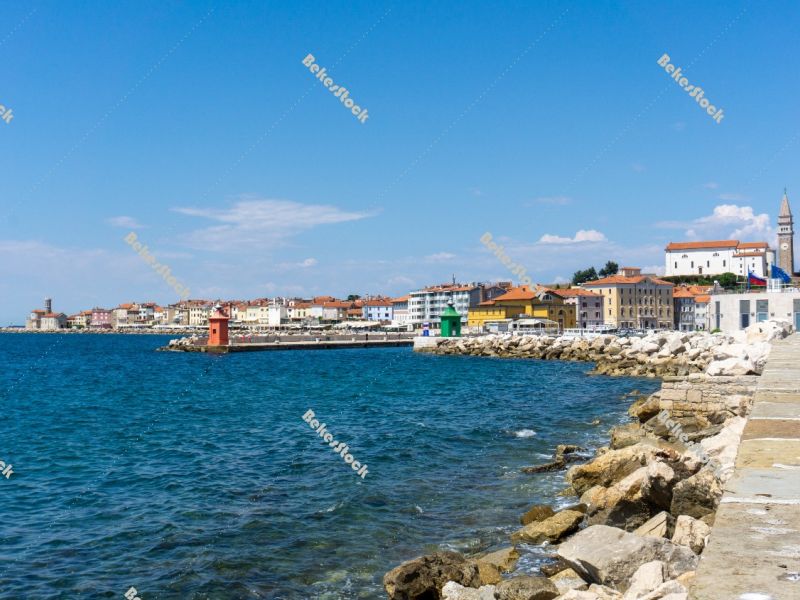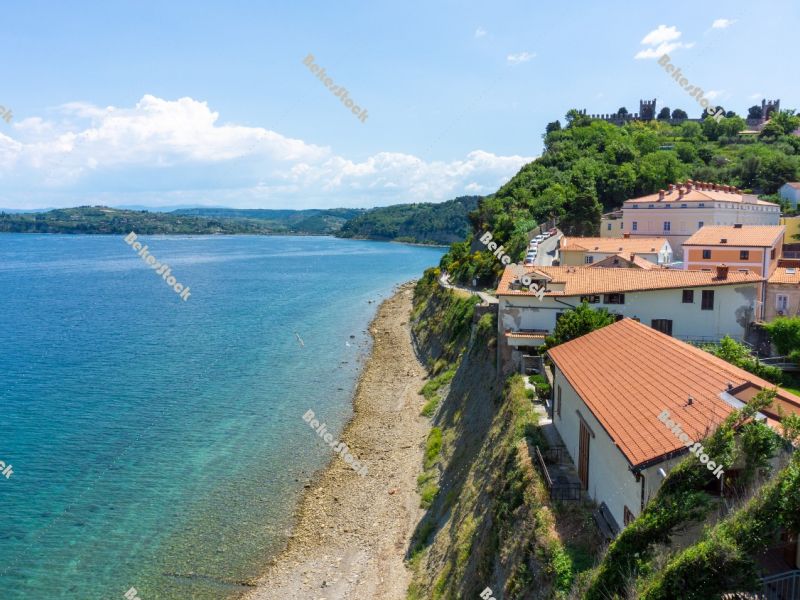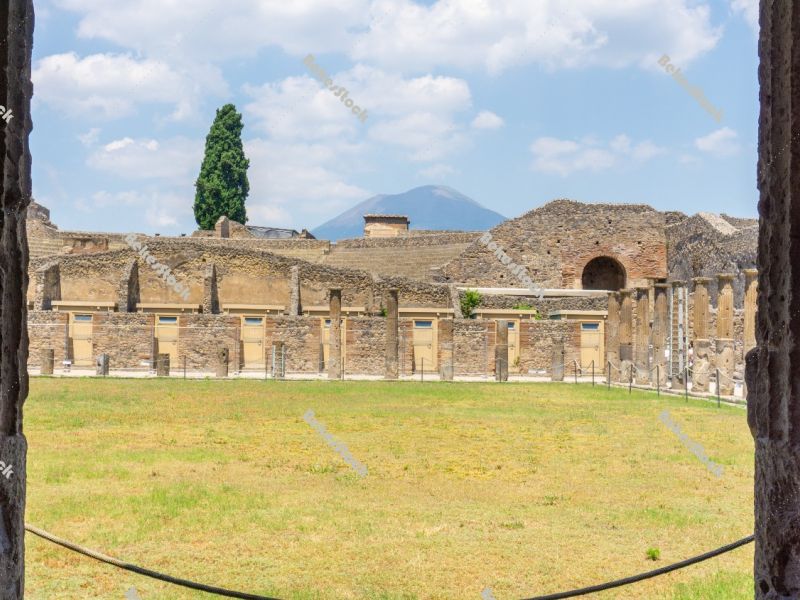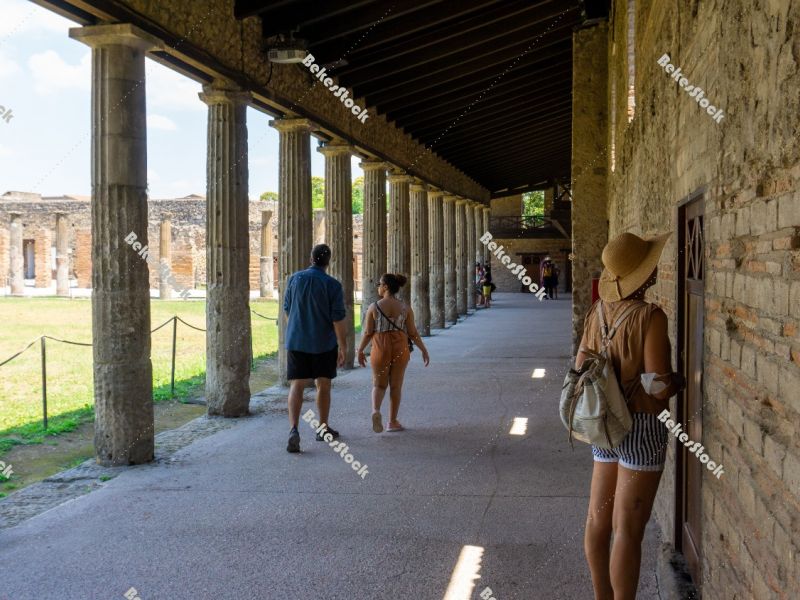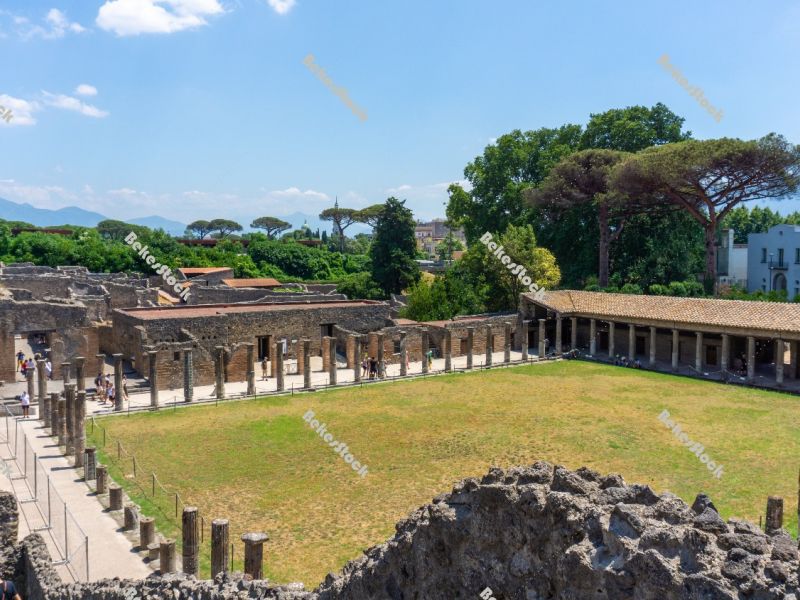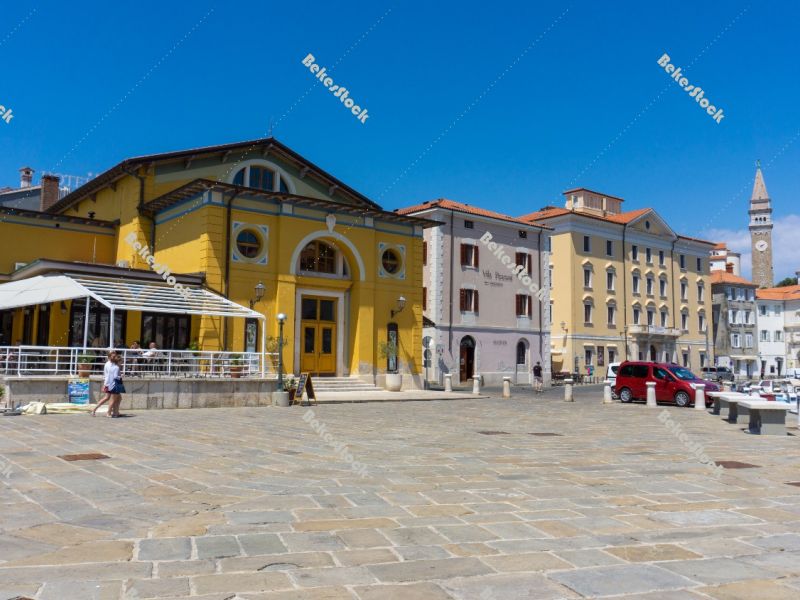Image Tags - top
-
View of Piran from Strunjan, Piran, Obalno-kraska, Slovenia, Jun View of Piran from Strunjan, Piran, Obalno-kraska, Slovenia, Jun
View of the Piran Peninsula from Strunjan. Behind the tables and chairs of the restaurant’s terrace you can see Piran and the St. George's Cathedral above the waters of the Adriatic Sea. Strunjan, Piran, Obalno-kraska, Slovenia, June 2020. @csabaprog
inn jurija city obalno-kraska summer tables portoroz monastery sky 14th building cathedral george old vacation town house fog chair sunny presbytary church nature balkan peninsula 2020 bell sea portorose adriatic june touristic st buffet roof piran green europe coast terrace slovenia cafe adria pirano cerkev adriatic sea diner chairs restaurant largest century mediterranean outdoor istria strunjan roses table steep exterior blue george`s attraction sv travel tower team cafeteria beach tree top tourism zupnijska csabaprogView of the Piran Peninsula from Strunjan. Behind the tables and chairs of the restaurant’s terrace you can see Piran and the St. George's Cathedral above the waters of the Adriatic Sea. Strunjan, Piran, Obalno-kraska, Slovenia, June 2020. @csabaprog
inn jurija city obalno-kraska summer tables portoroz monastery sky 14th building cathedral george old vacation town house fog chair sunny presbytary church nature balkan peninsula 2020 bell sea portorose adriatic june touristic st buffet roof piran green europe coast terrace slovenia cafe adria pirano cerkev adriatic sea diner chairs restaurant largest century mediterranean outdoor istria strunjan roses table steep exterior blue george`s attraction sv travel tower team cafeteria beach tree top tourism zupnijska csabaprog -
View of Piran Old Town from the tower of St. George's Cathedral, View of Piran Old Town from the tower of St. George's Cathedral,
View of Piran Old Town from the tower of St. George's Cathedral, `Župnijska cerkev sv. Jurija`. The photo shows the old town, the city wall, as well as the steep coast and the Adriatic Sea. Portoroz, Piran, Obalno-kraska, Slovenia, June 2020. @csabaprog
attraction sunny presbytary csabaprog europe church nature coast balkan city green team jurija bell obalno-kraska painting portorose summer beach sv touristic st istria house roof piran cloud wall steep 14th building old adria roses cerkev adriatic sea cathedral george pirano largest century mediterranean outdoor vacation blue town sea portoroz exterior slovenia george`s zupnijska sky travel tower top monastery adriatic fog june tourism 2020 treeView of Piran Old Town from the tower of St. George's Cathedral, `Župnijska cerkev sv. Jurija`. The photo shows the old town, the city wall, as well as the steep coast and the Adriatic Sea. Portoroz, Piran, Obalno-kraska, Slovenia, June 2020. @csabaprog
attraction sunny presbytary csabaprog europe church nature coast balkan city green team jurija bell obalno-kraska painting portorose summer beach sv touristic st istria house roof piran cloud wall steep 14th building old adria roses cerkev adriatic sea cathedral george pirano largest century mediterranean outdoor vacation blue town sea portoroz exterior slovenia george`s zupnijska sky travel tower top monastery adriatic fog june tourism 2020 tree -
View of Piran from Strunjan, Piran, Obalno-kraska, Slovenia, Jun View of Piran from Strunjan, Piran, Obalno-kraska, Slovenia, Jun
View of the Piran Peninsula from Strunjan. Behind the tables and chairs of the restaurant’s terrace you can see Piran and the St. George's Cathedral above the waters of the Adriatic Sea. Strunjan, Piran, Obalno-kraska, Slovenia, June 2020. @csabaprog
inn jurija city obalno-kraska summer tables portoroz monastery sky 14th building cathedral george old vacation town house fog chair sunny presbytary church nature balkan peninsula 2020 bell sea portorose adriatic june touristic st buffet roof piran green europe coast terrace slovenia cafe adria pirano cerkev adriatic sea diner chairs restaurant largest century mediterranean outdoor istria strunjan roses table steep exterior blue george`s attraction sv travel tower team cafeteria beach tree top tourism zupnijska csabaprogView of the Piran Peninsula from Strunjan. Behind the tables and chairs of the restaurant’s terrace you can see Piran and the St. George's Cathedral above the waters of the Adriatic Sea. Strunjan, Piran, Obalno-kraska, Slovenia, June 2020. @csabaprog
inn jurija city obalno-kraska summer tables portoroz monastery sky 14th building cathedral george old vacation town house fog chair sunny presbytary church nature balkan peninsula 2020 bell sea portorose adriatic june touristic st buffet roof piran green europe coast terrace slovenia cafe adria pirano cerkev adriatic sea diner chairs restaurant largest century mediterranean outdoor istria strunjan roses table steep exterior blue george`s attraction sv travel tower team cafeteria beach tree top tourism zupnijska csabaprog -
QUADRIPORTICUS OF THE THEATRES OR GLADIATORS BARRACKS in Pompeii QUADRIPORTICUS OF THE THEATRES OR GLADIATORS BARRACKS in Pompeii
QUADRIPORTICUS OF THE THEATRES OR GLADIATORS BARRACKS in Pompeii. Behind the scene of the Large Theatre there is a large quadrangle surrounded by 74 Doric grey tuff columns of Nocera used as a foyer, an area where the spectators could stop during the intervals of the theatre shows. After the earthquake of 62 AD the building changed its function and became a barracks for gladiators, which resulted in certain parts of the building being reorganised. The most important rooms were those on the eastern side whereas the rooms upstairs may have been the apartments of the undertaker of the gladiators. Pompeii was an ancient city located in what is now the comune of Pompei near Naples in the Campania region of Italy. Pompeii, along with Herculaneum and many villas in the surrounding area, was buried under 4 to 6 m of volcanic ash and pumice in the eruption of Mount Vesuvius in AD 79 (1st century). Pompei, Naples (Napoli), Campania, Italy, July 2020. @csabaprog
ornament csabaprog decay gladiator city tourist architectural door sightseeing italian empire naples paved barrack teatro houses building vesuvius old landmark excavation vacation town eruption rome historical disaster ruins 1st house history archaeology ancient catastrophe destroyed volcano theatre doric roman journey trip vesuvio column tall ruined scenary mount died century mediterranean vesuvious architecture europe napoli romanesque famous buried unesco excursion beautiful travel remains ash overlooked stone colorful historic tourism demolished archeological italyQUADRIPORTICUS OF THE THEATRES OR GLADIATORS BARRACKS in Pompeii. Behind the scene of the Large Theatre there is a large quadrangle surrounded by 74 Doric grey tuff columns of Nocera used as a foyer, an area where the spectators could stop during the intervals of the theatre shows. After the earthquake of 62 AD the building changed its function and became a barracks for gladiators, which resulted in certain parts of the building being reorganised. The most important rooms were those on the eastern side whereas the rooms upstairs may have been the apartments of the undertaker of the gladiators. Pompeii was an ancient city located in what is now the comune of Pompei near Naples in the Campania region of Italy. Pompeii, along with Herculaneum and many villas in the surrounding area, was buried under 4 to 6 m of volcanic ash and pumice in the eruption of Mount Vesuvius in AD 79 (1st century). Pompei, Naples (Napoli), Campania, Italy, July 2020. @csabaprog
ornament csabaprog decay gladiator city tourist architectural door sightseeing italian empire naples paved barrack teatro houses building vesuvius old landmark excavation vacation town eruption rome historical disaster ruins 1st house history archaeology ancient catastrophe destroyed volcano theatre doric roman journey trip vesuvio column tall ruined scenary mount died century mediterranean vesuvious architecture europe napoli romanesque famous buried unesco excursion beautiful travel remains ash overlooked stone colorful historic tourism demolished archeological italy -
Cloister - QUADRIPORTICUS OF THE THEATRES OR GLADIATORS BARRACKS Cloister - QUADRIPORTICUS OF THE THEATRES OR GLADIATORS BARRACKS
Cloister - QUADRIPORTICUS OF THE THEATRES OR GLADIATORS BARRACKS in Pompeii. Behind the scene of the Large Theatre there is a large quadrangle surrounded by 74 Doric grey tuff columns of Nocera used as a foyer, an area where the spectators could stop during the intervals of the theatre shows. After the earthquake of 62 AD the building changed its function and became a barracks for gladiators, which resulted in certain parts of the building being reorganised. The most important rooms were those on the eastern side whereas the rooms upstairs may have been the apartments of the undertaker of the gladiators. Pompeii was an ancient city located in what is now the comune of Pompei near Naples in the Campania region of Italy. Pompeii, along with Herculaneum and many villas in the surrounding area, was buried under 4 to 6 m of volcanic ash and pumice in the eruption of Mount Vesuvius in AD 79 (1st century). Pompei, Naples (Napoli), Campania, Italy, July 2020. @csabaprog
ornament csabaprog decay gladiator city tourist architectural door sightseeing italian empire naples paved barrack teatro houses building vesuvius old landmark excavation vacation town eruption rome historical disaster ruins 1st house history archaeology ancient catastrophe destroyed volcano theatre doric roman journey trip vesuvio column tall ruined scenary mount died century mediterranean vesuvious architecture europe napoli romanesque famous buried unesco excursion beautiful travel remains ash overlooked stone colorful historic tourism demolished archeological italyCloister - QUADRIPORTICUS OF THE THEATRES OR GLADIATORS BARRACKS in Pompeii. Behind the scene of the Large Theatre there is a large quadrangle surrounded by 74 Doric grey tuff columns of Nocera used as a foyer, an area where the spectators could stop during the intervals of the theatre shows. After the earthquake of 62 AD the building changed its function and became a barracks for gladiators, which resulted in certain parts of the building being reorganised. The most important rooms were those on the eastern side whereas the rooms upstairs may have been the apartments of the undertaker of the gladiators. Pompeii was an ancient city located in what is now the comune of Pompei near Naples in the Campania region of Italy. Pompeii, along with Herculaneum and many villas in the surrounding area, was buried under 4 to 6 m of volcanic ash and pumice in the eruption of Mount Vesuvius in AD 79 (1st century). Pompei, Naples (Napoli), Campania, Italy, July 2020. @csabaprog
ornament csabaprog decay gladiator city tourist architectural door sightseeing italian empire naples paved barrack teatro houses building vesuvius old landmark excavation vacation town eruption rome historical disaster ruins 1st house history archaeology ancient catastrophe destroyed volcano theatre doric roman journey trip vesuvio column tall ruined scenary mount died century mediterranean vesuvious architecture europe napoli romanesque famous buried unesco excursion beautiful travel remains ash overlooked stone colorful historic tourism demolished archeological italy -
QUADRIPORTICUS OF THE THEATRES OR GLADIATORS BARRACKS in Pompeii QUADRIPORTICUS OF THE THEATRES OR GLADIATORS BARRACKS in Pompeii
QUADRIPORTICUS OF THE THEATRES OR GLADIATORS BARRACKS in Pompeii. In the background you can see mountains, trees and a blue sky. Behind the scene of the Large Theatre there is a large quadrangle surrounded by 74 Doric grey tuff columns of Nocera used as a foyer, an area where the spectators could stop during the intervals of the theatre shows. After the earthquake of 62 AD the building changed its function and became a barracks for gladiators, which resulted in certain parts of the building being reorganised. The most important rooms were those on the eastern side whereas the rooms upstairs may have been the apartments of the undertaker of the gladiators. Pompeii was an ancient city located in what is now the comune of Pompei near Naples in the Campania region of Italy. Pompeii, along with Herculaneum and many villas in the surrounding area, was buried under 4 to 6 m of volcanic ash and pumice in the eruption of Mount Vesuvius in AD 79 (1st century). Pompei, Naples (Napoli), Campania, Italy, July 2020. @csabaprog
ornament csabaprog decay gladiator city tourist panorama architectural sightseeing italian empire architecture paved barrack teatro houses building vesuvius old landmark mountains vacation town eruption rome historical disaster ruins 1st house history archaeology ancient sunny catastrophe historic volcano theatre doric trees roman journey trip vesuvio column tall ruined scenary mount died vesuvious century mediterranean excavation europe naples napoli unesco romanesque famous buried colorful excursion beautiful travel ash overlooked sky remains destroyed demolished tourism stone archeological italyQUADRIPORTICUS OF THE THEATRES OR GLADIATORS BARRACKS in Pompeii. In the background you can see mountains, trees and a blue sky. Behind the scene of the Large Theatre there is a large quadrangle surrounded by 74 Doric grey tuff columns of Nocera used as a foyer, an area where the spectators could stop during the intervals of the theatre shows. After the earthquake of 62 AD the building changed its function and became a barracks for gladiators, which resulted in certain parts of the building being reorganised. The most important rooms were those on the eastern side whereas the rooms upstairs may have been the apartments of the undertaker of the gladiators. Pompeii was an ancient city located in what is now the comune of Pompei near Naples in the Campania region of Italy. Pompeii, along with Herculaneum and many villas in the surrounding area, was buried under 4 to 6 m of volcanic ash and pumice in the eruption of Mount Vesuvius in AD 79 (1st century). Pompei, Naples (Napoli), Campania, Italy, July 2020. @csabaprog
ornament csabaprog decay gladiator city tourist panorama architectural sightseeing italian empire architecture paved barrack teatro houses building vesuvius old landmark mountains vacation town eruption rome historical disaster ruins 1st house history archaeology ancient sunny catastrophe historic volcano theatre doric trees roman journey trip vesuvio column tall ruined scenary mount died vesuvious century mediterranean excavation europe naples napoli unesco romanesque famous buried colorful excursion beautiful travel ash overlooked sky remains destroyed demolished tourism stone archeological italy -
Beach promenade in Piran. Portoroz, Piran, Obalno-kraska, Sloven Beach promenade in Piran. Portoroz, Piran, Obalno-kraska, Sloven
Beach promenade in Piran. Along the sea you can see the old town of Piran with shops and restaurants. In the distance you can see the lighthouse (`Piranski svetilnik`) and the cathedral. Portoroz, Piran, Obalno-kraska, Slovenia, June 2020. @csabaprog
csabaprog promenade nature balkan city 2020 painting obalno-kraska coast portorose adriatic beach june tree attraction istria europe roof piran old wall green shops sky adriatic sea lighthouse house cerkev building cathedral pirano restaurant steep piranski mediterranean outdoor vacation portoroz roses restaurants blue exterior slovenia svetilnik town shop travel cloud top adria sunny fog team tourism summer touristicBeach promenade in Piran. Along the sea you can see the old town of Piran with shops and restaurants. In the distance you can see the lighthouse (`Piranski svetilnik`) and the cathedral. Portoroz, Piran, Obalno-kraska, Slovenia, June 2020. @csabaprog
csabaprog promenade nature balkan city 2020 painting obalno-kraska coast portorose adriatic beach june tree attraction istria europe roof piran old wall green shops sky adriatic sea lighthouse house cerkev building cathedral pirano restaurant steep piranski mediterranean outdoor vacation portoroz roses restaurants blue exterior slovenia svetilnik town shop travel cloud top adria sunny fog team tourism summer touristic -
View of Piran Old Town from the tower of St. George's Cathedral, View of Piran Old Town from the tower of St. George's Cathedral,
View of Piran Old Town from the tower of St. George's Cathedral, `Župnijska cerkev sv. Jurija`. The photo shows the old town, the city wall, as well as the steep coast and the Adriatic Sea. Portoroz, Piran, Obalno-kraska, Slovenia, June 2020. @csabaprog
attraction sunny presbytary csabaprog europe church nature coast balkan city green team jurija bell obalno-kraska painting portorose summer beach sv touristic st istria house roof piran cloud wall steep 14th building old adria roses cerkev adriatic sea cathedral george pirano largest century mediterranean outdoor vacation blue town sea portoroz exterior slovenia george`s zupnijska sky travel tower top monastery adriatic fog june tourism 2020 treeView of Piran Old Town from the tower of St. George's Cathedral, `Župnijska cerkev sv. Jurija`. The photo shows the old town, the city wall, as well as the steep coast and the Adriatic Sea. Portoroz, Piran, Obalno-kraska, Slovenia, June 2020. @csabaprog
attraction sunny presbytary csabaprog europe church nature coast balkan city green team jurija bell obalno-kraska painting portorose summer beach sv touristic st istria house roof piran cloud wall steep 14th building old adria roses cerkev adriatic sea cathedral george pirano largest century mediterranean outdoor vacation blue town sea portoroz exterior slovenia george`s zupnijska sky travel tower top monastery adriatic fog june tourism 2020 tree -
The view of Vesuvius from the Gladiators' Barracks. Pompei, Camp The view of Vesuvius from the Gladiators' Barracks. Pompei, Camp
The view of Vesuvius from the Gladiators' Barracks (QUADRIPORTICUS OF THE THEATRES). Behind the scene of the Large Theatre there is a large quadrangle surrounded by 74 Doric grey tuff columns of Nocera used as a foyer, an area where the spectators could stop during the intervals of the theatre shows. After the earthquake of 62 AD the building changed its function and became a barracks for gladiators, which resulted in certain parts of the building being reorganised. The most important rooms were those on the eastern side whereas the rooms upstairs may have been the apartments of the undertaker of the gladiators. Pompeii was an ancient city located in what is now the comune of Pompei near Naples in the Campania region of Italy. Pompeii, along with Herculaneum and many villas in the surrounding area, was buried under 4 to 6 m of volcanic ash and pumice in the eruption of Mount Vesuvius in AD 79 (1st century). Pompei, Naples (Napoli), Campania, Italy, July 2020. @csabaprog
ornament csabaprog decay gladiator city tourist architectural door sightseeing italian empire naples paved barrack teatro houses building vesuvius old landmark excavation vacation town eruption rome historical disaster ruins 1st house history archaeology ancient catastrophe destroyed volcano theatre doric roman journey trip vesuvio column tall ruined scenary mount died century mediterranean vesuvious architecture europe napoli romanesque famous buried unesco excursion beautiful travel remains ash overlooked stone colorful historic tourism demolished archeological italyThe view of Vesuvius from the Gladiators' Barracks (QUADRIPORTICUS OF THE THEATRES). Behind the scene of the Large Theatre there is a large quadrangle surrounded by 74 Doric grey tuff columns of Nocera used as a foyer, an area where the spectators could stop during the intervals of the theatre shows. After the earthquake of 62 AD the building changed its function and became a barracks for gladiators, which resulted in certain parts of the building being reorganised. The most important rooms were those on the eastern side whereas the rooms upstairs may have been the apartments of the undertaker of the gladiators. Pompeii was an ancient city located in what is now the comune of Pompei near Naples in the Campania region of Italy. Pompeii, along with Herculaneum and many villas in the surrounding area, was buried under 4 to 6 m of volcanic ash and pumice in the eruption of Mount Vesuvius in AD 79 (1st century). Pompei, Naples (Napoli), Campania, Italy, July 2020. @csabaprog
ornament csabaprog decay gladiator city tourist architectural door sightseeing italian empire naples paved barrack teatro houses building vesuvius old landmark excavation vacation town eruption rome historical disaster ruins 1st house history archaeology ancient catastrophe destroyed volcano theatre doric roman journey trip vesuvio column tall ruined scenary mount died century mediterranean vesuvious architecture europe napoli romanesque famous buried unesco excursion beautiful travel remains ash overlooked stone colorful historic tourism demolished archeological italy -
Beach promenade in Piran. Portoroz, Piran, Obalno-kraska, Sloven Beach promenade in Piran. Portoroz, Piran, Obalno-kraska, Sloven
Beach promenade in Piran. Along the sea you can see the old town of Piran with shops and restaurants. In the distance you can see the lighthouse (`Piranski svetilnik`) and the cathedral. Portoroz, Piran, Obalno-kraska, Slovenia, June 2020. @csabaprog
csabaprog promenade nature balkan city 2020 painting obalno-kraska coast portorose adriatic beach june tree attraction istria europe roof piran old wall green shops sky adriatic sea lighthouse house cerkev building cathedral pirano restaurant steep piranski mediterranean outdoor vacation portoroz roses restaurants blue exterior slovenia svetilnik town shop travel cloud top adria sunny fog team tourism summer touristicBeach promenade in Piran. Along the sea you can see the old town of Piran with shops and restaurants. In the distance you can see the lighthouse (`Piranski svetilnik`) and the cathedral. Portoroz, Piran, Obalno-kraska, Slovenia, June 2020. @csabaprog
csabaprog promenade nature balkan city 2020 painting obalno-kraska coast portorose adriatic beach june tree attraction istria europe roof piran old wall green shops sky adriatic sea lighthouse house cerkev building cathedral pirano restaurant steep piranski mediterranean outdoor vacation portoroz roses restaurants blue exterior slovenia svetilnik town shop travel cloud top adria sunny fog team tourism summer touristic -
Cloister - QUADRIPORTICUS OF THE THEATRES OR GLADIATORS BARRACKS Cloister - QUADRIPORTICUS OF THE THEATRES OR GLADIATORS BARRACKS
Cloister - QUADRIPORTICUS OF THE THEATRES OR GLADIATORS BARRACKS in Pompeii. A lady looks through a closed door. Behind the scene of the Large Theatre there is a large quadrangle surrounded by 74 Doric grey tuff columns of Nocera used as a foyer, an area where the spectators could stop during the intervals of the theatre shows. After the earthquake of 62 AD the building changed its function and became a barracks for gladiators, which resulted in certain parts of the building being reorganised. The most important rooms were those on the eastern side whereas the rooms upstairs may have been the apartments of the undertaker of the gladiators. Pompeii was an ancient city located in what is now the comune of Pompei near Naples in the Campania region of Italy. Pompeii, along with Herculaneum and many villas in the surrounding area, was buried under 4 to 6 m of volcanic ash and pumice in the eruption of Mount Vesuvius in AD 79 (1st century). Pompei, Naples (Napoli), Campania, Italy, July 2020. @csabaprog
ornament csabaprog decay gladiator city tourist lady architectural door sightseeing italian empire naples paved barrack teatro houses building vesuvius old landmark excavation vacation town eruption rome historical disaster ruins 1st house history archaeology ancient catastrophe historic volcano theatre doric roman looks journey trip vesuvio column tall ruined scenary mount died century mediterranean vesuvious architecture europe napoli unesco romanesque famous buried colorful excursion beautiful travel ash overlooked stone destroyed remains demolished tourism woman archeological italyCloister - QUADRIPORTICUS OF THE THEATRES OR GLADIATORS BARRACKS in Pompeii. A lady looks through a closed door. Behind the scene of the Large Theatre there is a large quadrangle surrounded by 74 Doric grey tuff columns of Nocera used as a foyer, an area where the spectators could stop during the intervals of the theatre shows. After the earthquake of 62 AD the building changed its function and became a barracks for gladiators, which resulted in certain parts of the building being reorganised. The most important rooms were those on the eastern side whereas the rooms upstairs may have been the apartments of the undertaker of the gladiators. Pompeii was an ancient city located in what is now the comune of Pompei near Naples in the Campania region of Italy. Pompeii, along with Herculaneum and many villas in the surrounding area, was buried under 4 to 6 m of volcanic ash and pumice in the eruption of Mount Vesuvius in AD 79 (1st century). Pompei, Naples (Napoli), Campania, Italy, July 2020. @csabaprog
ornament csabaprog decay gladiator city tourist lady architectural door sightseeing italian empire naples paved barrack teatro houses building vesuvius old landmark excavation vacation town eruption rome historical disaster ruins 1st house history archaeology ancient catastrophe historic volcano theatre doric roman looks journey trip vesuvio column tall ruined scenary mount died century mediterranean vesuvious architecture europe napoli unesco romanesque famous buried colorful excursion beautiful travel ash overlooked stone destroyed remains demolished tourism woman archeological italy -
QUADRIPORTICUS OF THE THEATRES OR GLADIATORS BARRACKS in Pompeii QUADRIPORTICUS OF THE THEATRES OR GLADIATORS BARRACKS in Pompeii
QUADRIPORTICUS OF THE THEATRES OR GLADIATORS BARRACKS in Pompeii. In the background you can see mountains, trees and a blue sky. Behind the scene of the Large Theatre there is a large quadrangle surrounded by 74 Doric grey tuff columns of Nocera used as a foyer, an area where the spectators could stop during the intervals of the theatre shows. After the earthquake of 62 AD the building changed its function and became a barracks for gladiators, which resulted in certain parts of the building being reorganised. The most important rooms were those on the eastern side whereas the rooms upstairs may have been the apartments of the undertaker of the gladiators. Pompeii was an ancient city located in what is now the comune of Pompei near Naples in the Campania region of Italy. Pompeii, along with Herculaneum and many villas in the surrounding area, was buried under 4 to 6 m of volcanic ash and pumice in the eruption of Mount Vesuvius in AD 79 (1st century). Pompei, Naples (Napoli), Campania, Italy, July 2020. @csabaprog
ornament csabaprog decay gladiator city tourist panorama architectural sightseeing italian empire architecture paved barrack teatro houses building vesuvius old landmark mountains vacation town eruption rome historical disaster ruins 1st house history archaeology ancient sunny catastrophe historic volcano theatre doric trees roman journey trip vesuvio column tall ruined scenary mount died vesuvious century mediterranean excavation europe naples napoli unesco romanesque famous buried colorful excursion beautiful travel ash overlooked sky remains destroyed demolished tourism stone archeological italyQUADRIPORTICUS OF THE THEATRES OR GLADIATORS BARRACKS in Pompeii. In the background you can see mountains, trees and a blue sky. Behind the scene of the Large Theatre there is a large quadrangle surrounded by 74 Doric grey tuff columns of Nocera used as a foyer, an area where the spectators could stop during the intervals of the theatre shows. After the earthquake of 62 AD the building changed its function and became a barracks for gladiators, which resulted in certain parts of the building being reorganised. The most important rooms were those on the eastern side whereas the rooms upstairs may have been the apartments of the undertaker of the gladiators. Pompeii was an ancient city located in what is now the comune of Pompei near Naples in the Campania region of Italy. Pompeii, along with Herculaneum and many villas in the surrounding area, was buried under 4 to 6 m of volcanic ash and pumice in the eruption of Mount Vesuvius in AD 79 (1st century). Pompei, Naples (Napoli), Campania, Italy, July 2020. @csabaprog
ornament csabaprog decay gladiator city tourist panorama architectural sightseeing italian empire architecture paved barrack teatro houses building vesuvius old landmark mountains vacation town eruption rome historical disaster ruins 1st house history archaeology ancient sunny catastrophe historic volcano theatre doric trees roman journey trip vesuvio column tall ruined scenary mount died vesuvious century mediterranean excavation europe naples napoli unesco romanesque famous buried colorful excursion beautiful travel ash overlooked sky remains destroyed demolished tourism stone archeological italy -
Tartini Theatre, `Gledališče Tartini`. Piran, Obalno-kraska, S Tartini Theatre, `Gledališče Tartini`. Piran, Obalno-kraska, S
Tartini Theatre, `Gledališče Tartini`. The Tartini Theatre is a beautiful example of a true fin-de-siècle art displaying a mix of Historicist and Secessionist styles from the beginning of the 20th century. The photo shows hotels next to the theater. In the distance you can see the cathedral and the harbor. Portoroz, Piran, Obalno-kraska, Slovenia, June 2020. @csabaprog
csabaprog city tartini painting obalno-kraska summer ship portoroz player sky hotels landscape cathedral old landmark harbor cityscape vacation secessionist town cloud house green central sunny historicist restaurants balkan 2020 theatre portorose adriatic Gledališče june touristic istria piran adria cerkev adriatic sea art restaurant show blue mediterranean outdoor europe pirano roses 20th culture exterior slovenia colorful design beautiful travel hotel style attraction actor top theater tourism trip buildingTartini Theatre, `Gledališče Tartini`. The Tartini Theatre is a beautiful example of a true fin-de-siècle art displaying a mix of Historicist and Secessionist styles from the beginning of the 20th century. The photo shows hotels next to the theater. In the distance you can see the cathedral and the harbor. Portoroz, Piran, Obalno-kraska, Slovenia, June 2020. @csabaprog
csabaprog city tartini painting obalno-kraska summer ship portoroz player sky hotels landscape cathedral old landmark harbor cityscape vacation secessionist town cloud house green central sunny historicist restaurants balkan 2020 theatre portorose adriatic Gledališče june touristic istria piran adria cerkev adriatic sea art restaurant show blue mediterranean outdoor europe pirano roses 20th culture exterior slovenia colorful design beautiful travel hotel style attraction actor top theater tourism trip building
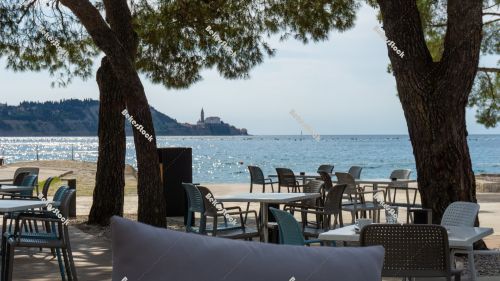
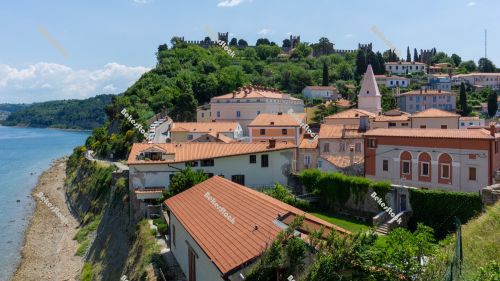
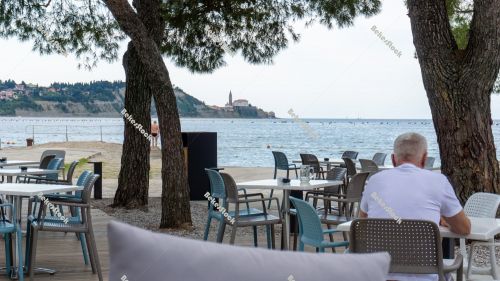
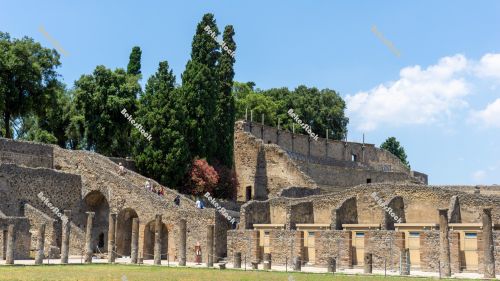

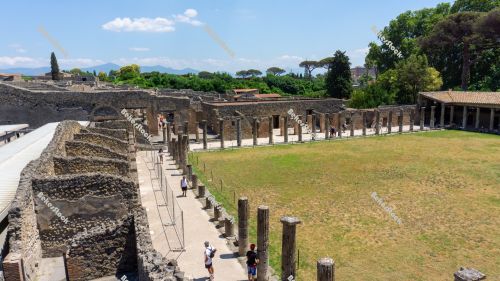
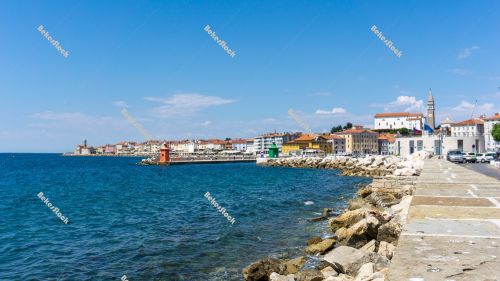

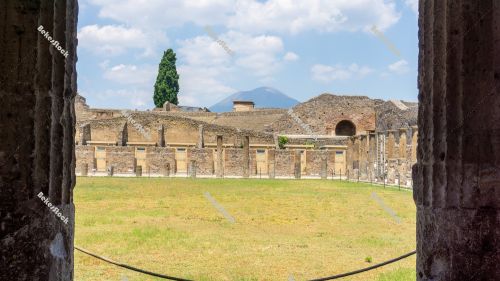
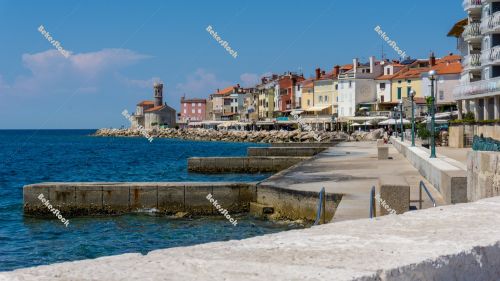
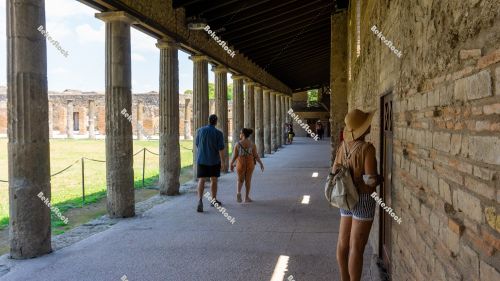
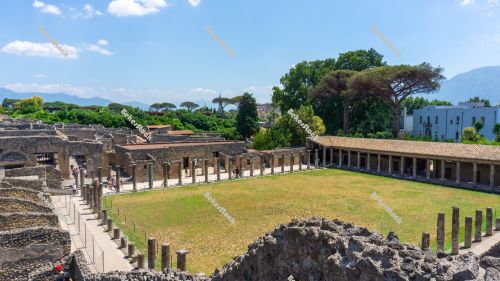
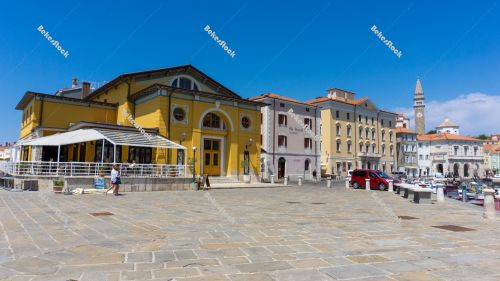
-
 View of Piran from Strunjan, Piran, Obalno-kraska, Slovenia, Jun
View of Piran from Strunjan, Piran, Obalno-kraska, Slovenia, Jun -
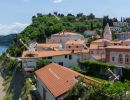 View of Piran Old Town from the tower of St. George's Cathedral,
View of Piran Old Town from the tower of St. George's Cathedral, -
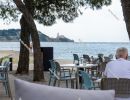 View of Piran from Strunjan, Piran, Obalno-kraska, Slovenia, Jun
View of Piran from Strunjan, Piran, Obalno-kraska, Slovenia, Jun -
 QUADRIPORTICUS OF THE THEATRES OR GLADIATORS BARRACKS in Pompeii
QUADRIPORTICUS OF THE THEATRES OR GLADIATORS BARRACKS in Pompeii -
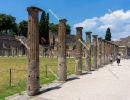 Cloister - QUADRIPORTICUS OF THE THEATRES OR GLADIATORS BARRACKS
Cloister - QUADRIPORTICUS OF THE THEATRES OR GLADIATORS BARRACKS -
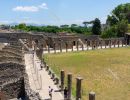 QUADRIPORTICUS OF THE THEATRES OR GLADIATORS BARRACKS in Pompeii
QUADRIPORTICUS OF THE THEATRES OR GLADIATORS BARRACKS in Pompeii -
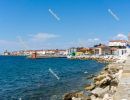 Beach promenade in Piran. Portoroz, Piran, Obalno-kraska, Sloven
Beach promenade in Piran. Portoroz, Piran, Obalno-kraska, Sloven -
 View of Piran Old Town from the tower of St. George's Cathedral,
View of Piran Old Town from the tower of St. George's Cathedral, -
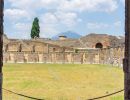 The view of Vesuvius from the Gladiators' Barracks. Pompei, Camp
The view of Vesuvius from the Gladiators' Barracks. Pompei, Camp -
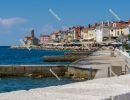 Beach promenade in Piran. Portoroz, Piran, Obalno-kraska, Sloven
Beach promenade in Piran. Portoroz, Piran, Obalno-kraska, Sloven -
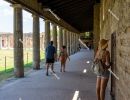 Cloister - QUADRIPORTICUS OF THE THEATRES OR GLADIATORS BARRACKS
Cloister - QUADRIPORTICUS OF THE THEATRES OR GLADIATORS BARRACKS -
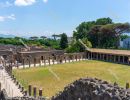 QUADRIPORTICUS OF THE THEATRES OR GLADIATORS BARRACKS in Pompeii
QUADRIPORTICUS OF THE THEATRES OR GLADIATORS BARRACKS in Pompeii -
 Tartini Theatre, `Gledališče Tartini`. Piran, Obalno-kraska, S
Tartini Theatre, `Gledališče Tartini`. Piran, Obalno-kraska, S

